|
Baseball season has just wrapped up with the Washington Nationals beating the Houston Astros to win their first World Series title ever. It reminds me of a baseball game played here in Perry back in 1922.
In October of 1922, Babe Ruth and a less popular but still very successful player in his own right, Bob Meusel, came to town to play an exhibition game. There was a lot of hype and excitement, as you can imagine, leading up to the event. The Perry branch of the American Legion had organized the event and hoped to make a tidy sum of cash off of ticket sales. Unfortunately, the day ended up being cold and dreary, and even though the rain mostly stopped an hour or so before the game began, the attendance was much lower than hoped. Ruth and Meusel ended up taking most of the profits home with them. I guess that’s what happens when you play a baseball game on Friday the 13th. The game was against Pella, and Meusel played for them while Ruth played for Perry. Meusel hit a homerun and Babe hit a couple of triples. You’d think “The Sultan of Swat” could have managed at least one homer, but apparently the outfield wasn’t enclosed by a fence, which enabled the outfielder to get to the ball and throw it back in before the lumbering Ruth could get past third base. I hadn’t realized until recently that the Ku Klux Klan was very active in Perry around that same time. I also didn’t know that the KKK was extremely anti-Catholic. Babe Ruth was Catholic and is said to have even visited St. Patrick’s School while in town. You would think given the fact that, according to a The Perry News article, a KKK grand master lived in town, there would have been protests and maybe even a cross burning. In reality, Babe Ruth coming to town was such a big deal that KKK members decided to forgo their prejudice for the day and instead sat in the stands and cheered for him and the hometeam along with everyone else. I guess that’s what happens when you play a baseball game in Perry. God bless America.
0 Comments
Hello readers and welcome back to the Hometown Heritage blog!
If you have not figured it out from the heat these past few days, June is here in full force! Of course, the heat isn’t the only thing that June brings: it also starts the season of summer blockbusters. Perhaps some of you have already gone to see some, such as Wonder Woman, at the Grand 3 Theatre. However, did you know that in the early 1900s the Grand 3 was not a theatre and that there were actually two different competing theatres in Perry? Years before it became what we frequent today, the Grand 3 Theatre in Perry was an entirely different form of entertainment. Perhaps you have noticed that the main screen at the Grand 3 has a different feel to it than the other screens. There are balconies on either side of the screen and there used to be an elaborate frame around the screen with busts above it. There even used to be a stage that extended out into the room! What do these lead you to believe the theatre used to be? If you guessed Opera House, you would be right! When it first opened in November 1903, the Grand 3 Theatre was actually the Grand Opera House. We do not have any pictures of the inside of the building when it was an Opera House, but one can assume that the balconies were once functional, with wealthy citizens sitting in them to watch the show. Although, come to think of it, I used to work at the Theatre and I never found a way to access those balconies, so maybe they were always just decorations! Now, although the Grand 3 Theatre was not always used to show movies, there were two other places in Perry one could go to see the moving pictures. Opening around 1910, these two theatres were the Rex Theatre and the Majestic Theatre. The Rex Theatre, as I understand it, was just down the street from the Grand Opera House on the corner of Second and Lucinda. The Majestic Theatre, on the other hand, was farther down Second Street, closer to the Carnegie Library (in fact it looks like it used to be in the building where the Shoppe of Oddities is now). In fact, according to our collection there used to be a third theatre called “Foxy Theatre”, but I can only find one reference to it so I am unsure if it was an actual third theatre or a rebranding of one of the other two theatres. Still, with all these other theatres in town it makes me wonder why none of the rest of them survived. Did the Grand 3’s transition to a theatre drive the rest from town? Did the other theatres burn down in one of the numerous fires in Perry? If any of you readers know, tell us in the comments, and join us next week for another Hometown Heritage Blog! Hello readers and welcome back to the Hometown Heritage Blog!
Summer Break is finally upon us and with it comes bored kids looking for something to do. There are many activities that kids like to do to pass the time, including sports, video games, and playing with other toys. However, there is one summer activity that appears to be a long standing tradition for children everywhere: a summer reading program! It seems that the summer reading program has had a long history in Perry. The earliest photos in our collection that pertain to the summer reading program date back to 1966: 51 years ago! The photo showing two kids, Kay and Bobby Kidney, getting prizes from the librarian at the time, Louise Fullhart, for reading 30 books that summer. Another photo, this time from 1968, shows Louise Fullhart once again. This time she is with her husband, Frank Fullhart, who was there to tell the children stories about his railroad days. The interesting thing about this photo is that it is taken somewhere in the Carnegie Library which is, of course, our current home. However, although now the Children’s Room, or Room of Wonder, is upstairs, back in the 1960s it was moved downstairs to where the Courtroom is now. It looks quite different from this picture! Gone are the bookcases and curtains to be replaced with the current Courtroom furniture. It would have been interesting for me to see what the whole room looked like compared to now. It seems like the children of Perry have been enjoying a reading program for a long time, and they will continue to enjoy it in the years to come. In fact, the reading program for this summer starts soon with Kids Fest this weekend! Although it is hosted by the Perry Public Library, we will also be taking part in Kids Fest. Here at the Carnegie Library Museum kids will partake in a scavenger hunt to find some historic photos. Perhaps I’ll see you there readers, and come back next week for another Hometown Heritage blog! Hello readers and welcome back to the Hometown Heritage Blog!
Every day, we use cars to get to all the places that we need to go. Be it work, the store, home, or somewhere else, we all generally rely on cars to get us from point A to point B. With these vehicles comes the need to have somewhere to refuel them: gas stations! Nowadays, gas stations are everywhere, and most towns generally have more than one (unless you are Bouton, then you don’t even have one at all). This does raise a question, however. What were gas stations like when they were first appearing around the country? One of the earliest pictures of a gas station that I can find in our collection is on a postcard that dates back to about 1915. It shows the Rude Auto Station in Perry, with the old Fire Hall in the background. Although you cannot see any gas pumps in this picture, the description does talk about them. Rude Auto featured a new style of pump: the measuring machine and hose style. According to our system, this style replaced the old bucket and funnel style which I can only imagine worked in a similar way to how we fill up lawn mowers and other small machines today. Imagine how long it would take to fill a whole car tank (of today’s size) with that system! That’s probably why gas stations of the early 1900s had attendants who did that for you. Speaking of attendants, we have another photo in our collection that shows on such person! Dated to 1918, it is a picture of a man standing next to a pump at the Manhattan Oil Co. (at least, I think he is an attendant). Of course, his job here would be to fill up your car with gas from what I believe is an example of the measuring machine and hose style pump mentioned earlier in addition to possibly washing your windscreen and other minor things. Considering how inexpensive gasoline used to be (at least compared to today), I can’t imagine that he was paid very well for all the work he did! It makes me wonder when attendants stop being employed at gas stations and why the switch to self-serving was made. Perhaps it was due to gas stations wanting to earn more, or perhaps, newer pump systems were easier to use? Readers, do any of you know? Let us know in the comments, and join us next week for another Hometown Heritage Blog! 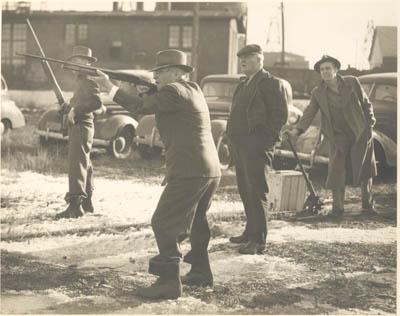 Hello readers and welcome back to the Hometown Heritage blog! As many of you know, Perry is a town that flourished because of the railroad. The railroad was so prevalent here that we have many photographs in our collection that show the trains, the tracks, and more. In fact, Perry used to have so many trains that came in and out of town that we had our own roundhouse! Although the number of roundhouses is not clear from our records, we do know that one roundhouse used to be located where the elementary school is currently. What is interesting about the roundhouse, however, is that it was not just used as a place to gather trains! Readers, do you have any guesses as to what else might have happened at the old roundhouse? If you guessed that people used to go skeet shooting at the roundhouse, then you would be right! According to the description of this photo, people would go out on Sundays and meet at the roundhouse where they would do some skeet shooting in the 1940s. What amazes me most about this is that guns were allowed so close to a place of work. If the shooters were fooling around too much, they could have injured one of the railroad workers! Perhaps this was allowed because the workers were not working during Sundays? Or maybe the railroad workers were in on it and allowed people to do this without the consent of the managers. It seems only someone who was there would know! In any case, it looks like this is what people would do for fun during the 1940s. Readers, what do you do for fun on the weekends? Let us know in the comments, and join us next week for another Hometown Heritage Blog! Hello readers and welcome back to the Hometown Heritage Blog! Have you ever wished that you could have been a kid forever, that you could fly away to a place where you would never grow old? Well one way to achieve this goal would be to get in touch with Peter Pan and fly away to Neverland! Residents of Perry did just that on November 20 and 21 1971. They watched as Wendy, John, Michael, and even Captain Hook interacted with Peter. Here at Hometown Heritage, we are lucky enough to have some rare photos of the event! In our first photo we can see John and Michael Darling. Michael is sitting on their (rather enormous) dog and is holding an unknown object, while John is carrying his umbrella. Moments later Wendy would come into their room and put them to bed and it would not be long before Peter Pan found them. In fact, our next picture happens to capture the illusive teenager lying on top of the fireplace. It is suspected that it is around this time that Peter Pan convinced the Darlings to run away to Neverland with him. Our final two pictures are of the infamous criminal pirate, Captain Hook. The scoundrel named Hook, due to the hook replacing his right hand, is accused of attacking and threatening the lives of Peter Pan and the Darling children. As you can see, in one picture he is brandishing a sword and assaulting Peter, most likely with ill intent. Our final picture is the last known picture of the criminal alongside the crocodile that was seen chasing him into the distance. It is presumed that the crocodile is the same crocodile that caused Hook the injury resulting in his hook hand and that the animal had acquired a taste for Hook. After their scrape with the pirate captain and his band of thugs, the Darling children decided to return home, and lived peaceful lives. If you wish to see a reenactment of the events of this story, the Perry High School Music and Drama departments are performing one this weekend! There will be three showings, with two both at 6:30 P.M. on both March 31 and April 1 and a matinee at 1 P.M. on April 1. If you attend, you can see how closely the play resemble the scenes seen in these photos of the events! Did you ever wish to fly away with Peter Pan? Let us know and the comments, and join us next week for another Hometown Heritage Blog! 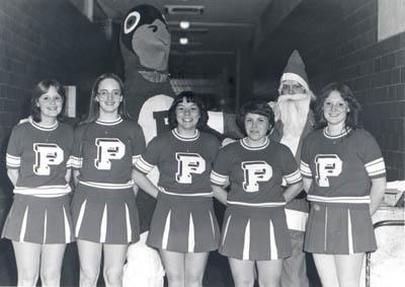 Hello readers and welcome back to the Hometown Heritage blog! March Madness is coming up within the week, so I thought that we would have a basketball themed blog post today! We have many basketball pictures in our collection, but many of them are simple pictures of team line-ups or stills of games in action. Most of them do not offer much interesting things to look at, aside from how uniforms have changed. However, a few pictures have unique aspects to them that cause one to pause. For instance, there is one picture titled “1979 Basketball Cheerleaders”. Similar to the other pictures, you can see in this picture how much the uniforms have changed. This is not, however, what I find most interesting about this picture. The most interesting part of this picture are the two people in the background! One of the two people is dressed as Santa. This is most likely because the photo was taken around Christmas time (at least I hope!), so he is of less interest than the man standing to his left. Looking carefully it would appear that this man is dressed as a giant bird! If I may be so bold, I would assume that this is supposed to be the Mascot, the Perry blue jay. However, to me he looks ridiculous! He barely resembles a bird (only the “beak” and eyes tipped me off) and I highly doubt that anything resembling feathers are anywhere on the costume. It is amazing how much different the costume is from today’s mascot who has feathers and is much more bird like. It makes me wonder if this one is still in storage somewhere! If you know anything more about this mascot costume, let us know in the comments, and join us next week for another blog post! Hello readers and welcome back to the Hometown Heritage blog!
Many of you, like me, probably remember when Perry used to have a railway instead of a bike trail. There used to be the whistle of a train near every-day and cars would have to wait for the trains to pass. The Milwaukee Road, as evidenced in the art in the Hotel Pattee, used to pass through here as well. In fact, I found some interesting pictures about the Milwaukee Road in our collection! First, we have a picture of the last Milwaukee train to leave Perry on March 23, 1980 at 6 P.M. Although not that interesting of a photo, it shows the slow progress of the railroad leaving Perry. The next photo, however, creates some questions for me. The picture is also of the Milwaukee Road, but has a note that says it is the “Rip” Track Area. From the looks of the picture, it seems to be an empty road, with a bit of track near the bottom of the picture. This is where my questions start! I looked up what a “Rip” track is supposed to be and according to Wikipedia it is short for “repair inspect paint” track. Yet to me, it seems like there is no track here! In addition, the picture is dated to 1980, the same year when the last Milwaukee train left Perry! Perhaps this means that it is the ripping up of the train tracks in this area? It would definitely appear this way, since the area is covered in dirt and the track at the bottom is covered up. However, I do not know for sure, as our database does not provide much information. Since this happened in 1980, perhaps some of you readers may know? If you do, please let us know in the comments, and join us next week for another blog post! 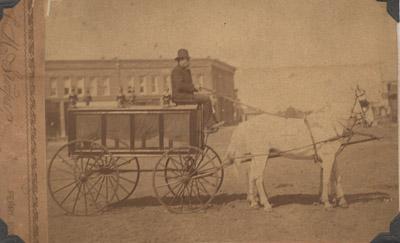 Hello readers and welcome back to the Hometown Heritage Blog! Today I have another interesting photo from our collection for you all! Look at the picture that accompanies this post. What do you think it is? The picture itself is from 1885, and as you can see, it depicts a man on a cart drawn by a horse. The cart itself is rather fancy; it has what looks like curtains on the inside. Why does a cart need curtains? This, readers, is part of the answer! Curtains are usually meant to keep people on the outside from seeing the inside of a building or in this case, cart. Perhaps you are thinking that his wagon was used to transport money to and from banks? Unfortunately, if you are you will have to guess again! I imagine that someone transferring money would have a guard or two with him, and this man is clearly alone, so I doubt that he would be moving money. If you need another hint, I can tell you that the purpose of this cart was rather morbid. Let us put these two clues together: the cart wants to stop people from seeing inside it, and its purpose is rather morbid. Do you have another guess? If you guessed that this cart was a hearse, then you would be correct! This picture is of the first hearse in Perry in 1885, driven by Dave Willis. The hearse itself was by Carpenter and Son. The curtains on the inside are clearly used to hide the coffin from citizens the hearse might pass on the way to the cemetery. It makes me wonder if Dave Willis was also the undertaker or if he was simply the driver of the hearse. Unfortunately, our collection does not have any more information about this hearse or about how long it was in use. It is interesting, however, to see one of Perry’s firsts! Are you interested in seeing more of Perry’s firsts? Then swing by the Carnegie Library, the first library in Perry, and come back next week for another blog post! 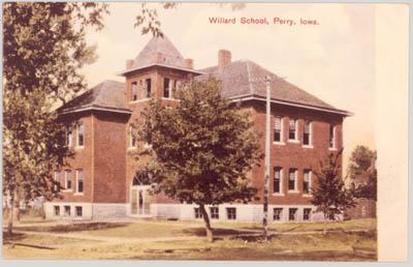 Hello and welcome back to the Hometown Heritage blog! Today I found something interesting about Perry that many of you might not know. If you grew up in Perry, or raised kids here, you know that Perry has many different buildings used as schools. There is the Elementary School near the Recreation Center, St. Pat’s School, and the connected Middle School and High School. However, did you know that there used to be another school building? Before you say something like “of course I did, they only demolished it recently silly”, the old High School that they recently demolished and are turning the grounds into a nursing home is not the school I am referencing. There is actually a second school in Perry that no longer exists! This second school was demolished in February 1967, so it makes sense that many of you probably do not even know that it existed. Called the “Willard School”, it was built in 1900 at the Northeast corner of Seventh and Lucinda. It was primarily a school for young children, as it did not go past sixth grade. The Willard School was used for school purposes until 1940, when it was then converted to a youth recreation center due to disrepair until its demolishing 27 years later. Unfortunately, this is as far as the story goes in our catalogue. Why was an active school allowed to fall into disrepair? Why did Perry need so many school buildings? Who was Willard and why did he have his own school? These are just some of the questions that plague the mind concerning this school. We do not even know why it was eventually demolished, although it can be assumed that it was due to a continuing state of disrepair. If any of you readers have any more information on the Willard School, we would love to hear it! Adding new information to our records is always welcome and ensures future generations will be able to learn about the town they live in, so do not be afraid to leave a comment with your thoughts or extra facts! |
Archives
March 2020
Categories
All
|
All Rights Reserved, Fullhart Carnegie Charitable Trust, 2014-2023
This website is possible with the support of the
Dallas County Foundation
This website is possible with the support of the
Dallas County Foundation

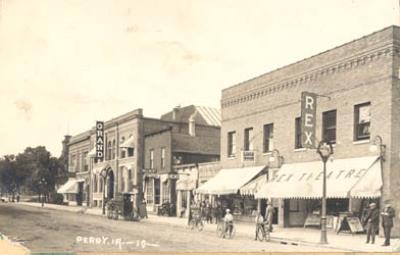
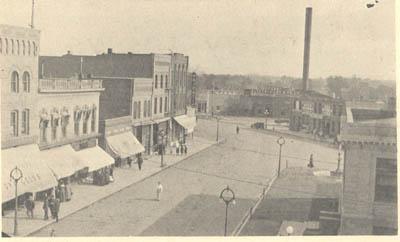
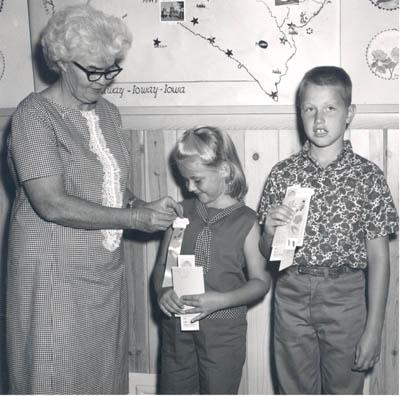
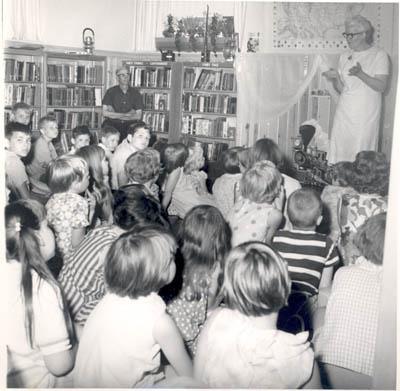
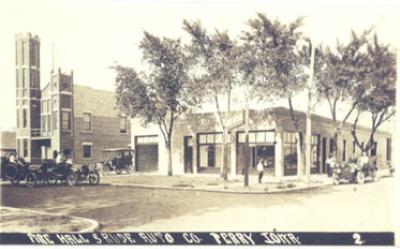
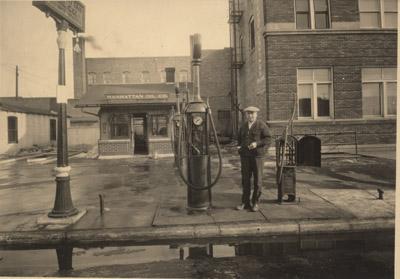
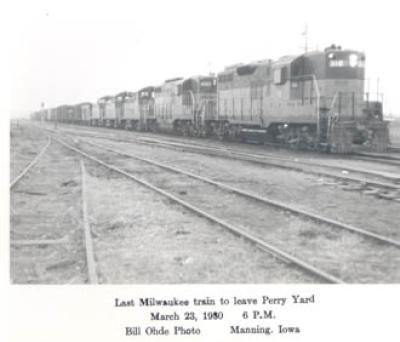
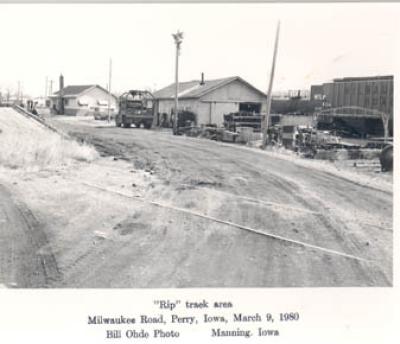
 RSS Feed
RSS Feed